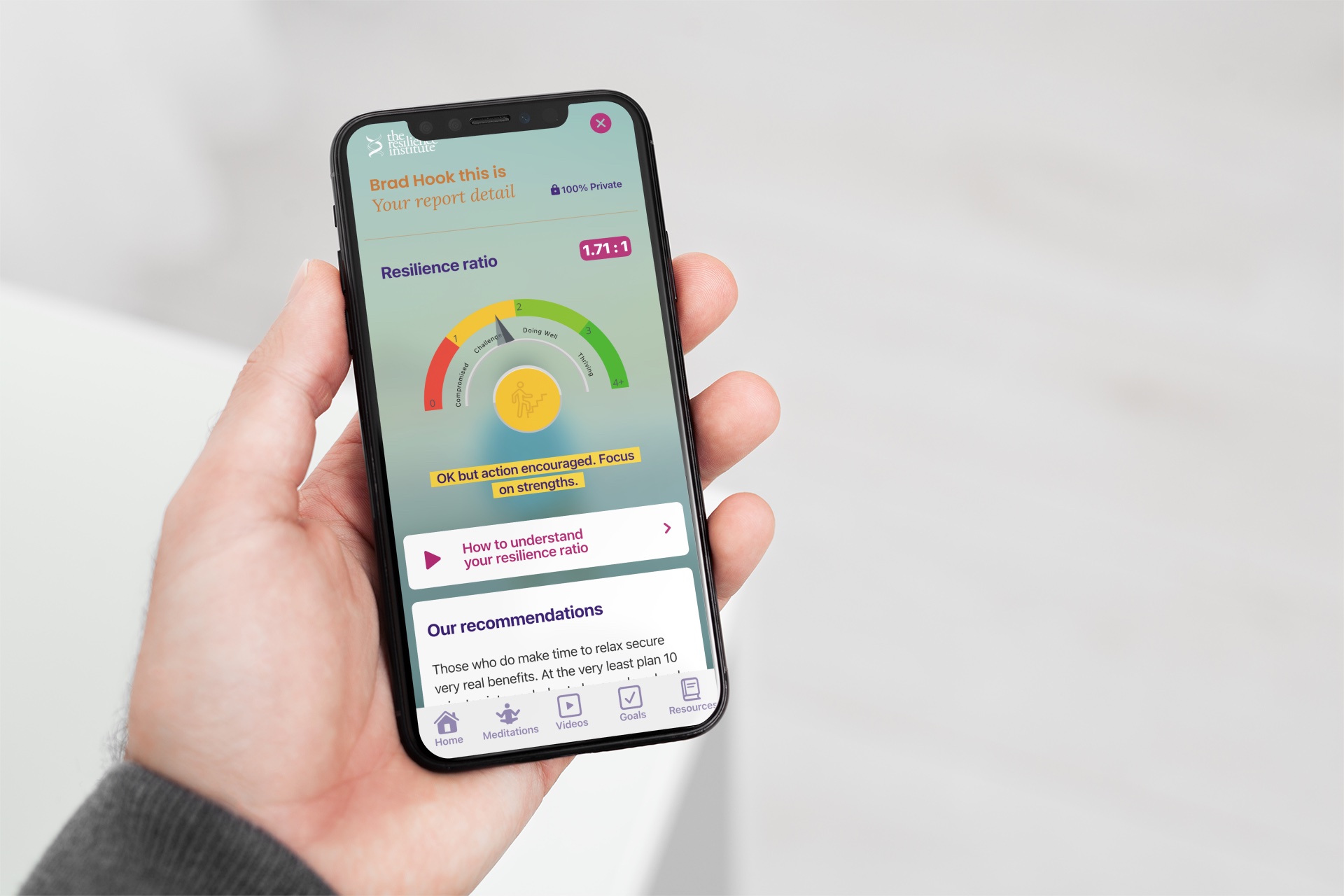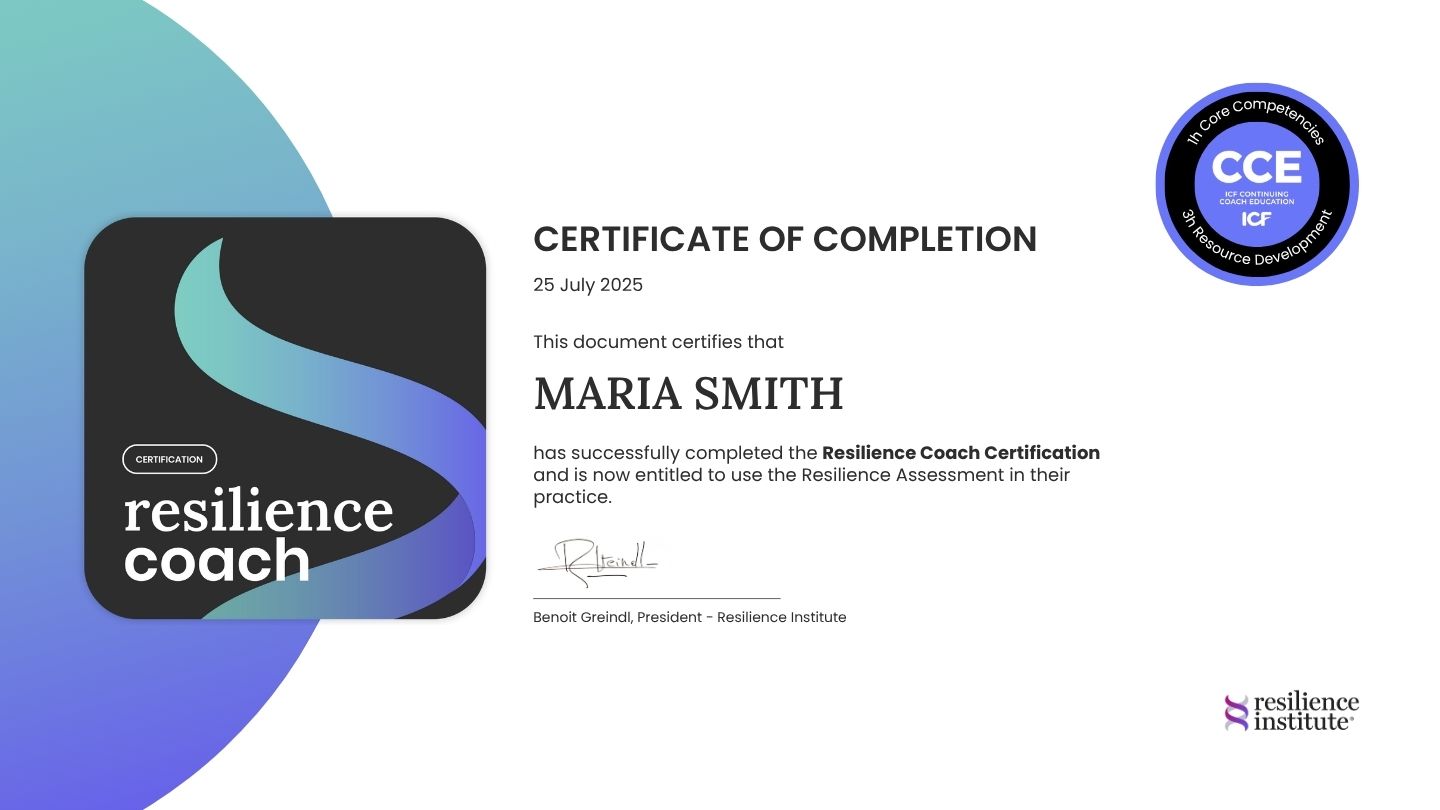
What Can Resilient Technology Teach Us About Building Resilient Teams?
Resilience is critical both in technology and human performance. Consider a resilient technology system. It can handle disruption and challenge, such as a network error or power outage, without shutting down. Can we apply this concept of resilience to human teams? The answer is a resounding “yes”.
Understanding Resilient Systems in Technology
In the realm of technology, resilient systems are synonymous with efficiency, reliability, and robustness. The keystones of such systems are redundancy, diversity, decentralization, modularity, and adaptability.
- Redundancy, although often viewed negatively in human terms, is a technological safeguard, providing multiple backups to ensure system functionality in case of failure.
- Diversity in technology brings a spectrum of different elements, each performing unique tasks to prevent system-wide failures.
- Decentralization is about having distributed power and control. The downfall of one section doesn’t mean the downfall of the whole.
- Modularity focuses on breaking the system into manageable, self-contained units. This way, any disruption can be isolated without impacting the entire system.
- Adaptability emphasizes flexibility and proactivity in the face of challenges. It’s the system’s ability to anticipate, react to, and learn from disruptions that makes it truly resilient.
Drawing Parallels Between Resilient Tech Systems and Human Teams
So, how do we translate these technological concepts to human terms?
Redundancy in the workforce is akin to cross-training and multifunctional teams. This means more than one person knows how to perform a particular task, creating a backup for instances of absence or attrition.
Diversity means different skills, experiences, and perspectives co-existing within the same team. Diverse teams can approach problem-solving in unique ways and demonstrate better adaptability to change.
Decentralization empowers team members, fostering autonomy and avoiding over-reliance on a single individual.
Modularity reflects in semi-independent, cross-functional teams that can work independently yet in harmony with the larger organization.
Adaptability in a team is fostered through a culture of continuous learning and proactive anticipation of challenges.
Strategies to Build Resilient Teams Using the Resilient Systems Approach
Let’s dive into practical strategies to nurture these traits in your teams.
Cross-Training and Skill Development (Redundancy)
In the world of resilient technology systems, redundancy refers to having backup components in place, ready to take over if the primary system fails. Similarly, cross-training and skill development within teams serve as a form of human redundancy. This doesn’t mean replacing employees, but rather, it means developing a team where multiple individuals can perform a variety of tasks. This encourages flexibility and ensures that the absence or unavailability of one team member doesn’t bring the entire operation to a halt. This strategy not only provides a safety net for the team but also enhances individual skill sets and job satisfaction.
Diversity and Inclusion (Diverse Opinions and Backgrounds)
Just like a well-rounded technology system requires diverse software and hardware elements to function effectively, a resilient team needs diverse thoughts, perspectives, and backgrounds. Encouraging a culture of diversity and inclusion opens the door to a multitude of innovative ideas and solutions. It allows teams to approach challenges from multiple angles, improving the quality of decision-making and problem-solving, while also fostering a more equitable and harmonious work environment.
Empowerment and Decentralization
In resilient technology systems, decentralization plays a significant role by distributing processes or data across various nodes to prevent any single point of failure. In a team, empowering individuals with decision-making capabilities mirrors this principle. This strategy reduces bottlenecks, speeds up decision-making, and ensures that the team can continue to function effectively even if a key decision-maker is unavailable. It also improves job satisfaction and motivates employees as they feel more valued and in control of their work.
Semi-Independent Teams
This concept is akin to modular design in technology systems, where each module can function independently while contributing to the whole system. Creating semi-independent teams within an organization can help ensure operations continue smoothly even if one department faces disruption. These teams can adjust and respond to challenges independently, providing the organization with flexibility and resilience to external shocks.
Culture of Learning and Proactive Problem-Solving (Adaptability)
Just as resilient technology systems need to adapt and upgrade to stay relevant, teams also need to foster a culture of learning and proactive problem-solving. This culture allows teams to not only react swiftly to changes but also to anticipate potential problems and devise solutions beforehand. It encourages continuous learning, innovation, and improvement, which are key to staying competitive and adaptable in the face of changing market dynamics or unexpected disruptions.
Measurement and Diagnostics: The Core of Resilient Technology and Teams
In the realm of technology, measurement and diagnostic assessment are the critical pillars upon which the entire system stands. These components ensure not only the smooth running of systems but also enable their evolution, ensuring they can adapt and withstand changing circumstances, thereby mirroring the essence of resilience.
To elucidate this further, let’s consider a simple example from the world of technology. Servers are consistently monitored using a variety of diagnostic tools to assess system health, identify possible failures, and prevent them from happening. Data such as CPU usage, memory consumption, and network traffic are measured and analyzed to ensure optimal performance. When anomalies are detected, immediate steps are taken to rectify the issues. These constant evaluations and adjustments form the basis of a resilient technology system.
The same principle of continual diagnostics and assessment applies equally to human teams within an organization. However, rather than focusing on hardware or software, we shift our attention to the “humanware” – the employees. Just as we monitor and measure a system’s performance and respond to anomalies, it is equally crucial to identify and understand the strengths and weaknesses of a team.
Imagine a workplace environment where you have insights into the human strengths and risks within your team. This allows you to understand the factors that amplify performance and identify areas requiring improvement or support. You would know where your team shines and where it might need an extra push or resources. By knowing these, you can make informed decisions to enhance the effectiveness, productivity, and, ultimately, the resilience of your team.

This is not a hypothetical scenario. The Resilience Assessment brings this vision to life. As an integral assessment system, it provides companies with unique, actionable insights that conventional engagement surveys often miss. By assessing the resilience factors of individuals and teams, it enables organizations to proactively address potential risks and harness collective strengths.
The Resilience Assessment aids in crafting targeted intervention strategies, fostering a resilient workplace culture, and enhancing the overall performance of the team. It offers a data-driven approach to human resource management, paving the way for sustainable organizational success.
So, just as diagnostic tools are indispensable in maintaining and improving resilient technology systems, the Resilience Assessment tool is integral in building and nurturing resilient teams. Don’t wait to find out what your team’s resilience profile looks like. Click here to get Resilience Assessment.
Benefits of Applying a Resilient Systems Approach to Human Teams
A resilient team, just like a resilient tech system, is robust, adaptable, and efficient. The benefits are tangible: greater productivity, improved problem-solving, increased employee engagement, and the ability to weather the storms of change. Let’s explore some of the benefits in detail.
Productivity
By fostering redundancy through cross-training, we ensure that there are no single points of failure within the team. This means that work can continue unimpeded even in the face of individual absences or unavailability, leading to more consistent output and improved productivity.
Empowering team members with decision-making capabilities reduces bottlenecks, streamlining workflows and increasing the overall efficiency of operations. Moreover, promoting a culture of proactive problem-solving ensures that issues are addressed promptly, minimizing downtime and enhancing productivity.
Wellbeing
A resilience-focused approach to teams is not just about output – it’s also about employee wellbeing. Creating semi-independent teams allows for a better work-life balance, as workloads can be managed more efficiently across team members, reducing stress and burnout.
Moreover, empowering individuals and valuing diverse opinions increases job satisfaction and boosts morale. By encouraging continuous learning and skill development, employees feel more fulfilled and engaged in their roles, enhancing their overall wellbeing.
Culture
Cultivating a resilience-focused culture can lead to transformative changes within an organization. It fosters an environment where diverse opinions are valued, mistakes are viewed as learning opportunities, and problem-solving is proactive rather than reactive.
Such a culture encourages transparency, collaboration, and mutual support, creating a more harmonious and positive work environment. It also signals to employees that the organization values their contribution and development, leading to increased loyalty and commitment.
Innovation
The principle of diversity in resilient systems isn’t just about inclusive teams, but also about nurturing a broad spectrum of ideas. By valuing diverse opinions and perspectives, organizations can unlock innovative solutions to complex problems. A culture that encourages learning and adaptability also promotes creativity and experimentation, driving innovation forward.
Resilience During Change
In an ever-evolving business landscape, adaptability is crucial. Resilient teams, like resilient tech systems, are designed to weather the storms of change. By promoting a culture of learning and adaptability, teams can stay ahead of market trends, respond swiftly to disruptions, and turn challenges into opportunities.
Thus, a resilient systems approach to human teams results in benefits that go far beyond mere operational efficiency. It can transform the way your organization functions, fostering a culture of resilience, adaptability, and innovation that leads to sustainable success.
What about AI Resilience?
Artificial Intelligence (AI) is on almost everyone’s mind since the introduction of tools such as ChatGPT into our everyday lives. However, is AI resilient?
AI can be designed to be resilient, but it is not inherently resilient. Let’s unpack this a bit:
Resilience in AI refers to the ability of an AI system to maintain or quickly regain high-level performance in the presence of adverse conditions. These conditions could include input data that deviates from training data, adversarial attacks intended to deceive or disrupt the AI, or changes in the environment where the AI operates.
For AI to be resilient, it needs to be designed and trained in a way that can handle these disruptions. This could involve:
- Robustness: Designing AI models to handle a variety of situations, including those that differ from their training data. This can involve techniques like data augmentation, adversarial training, and transfer learning.
- Redundancy: Just like in resilient technology systems, redundancy in AI can mean having backup models that can step in if the primary model fails.
- Continuous Learning: Resilient AI systems can adapt over time to changing conditions, learning from new data and experiences. This often involves reinforcement learning or other forms of online, incremental learning.
- Interpretability and Transparency: If we can understand how the AI makes decisions, we can better predict how it will behave under different conditions and make necessary adjustments.
However, it’s important to note that these capabilities aren’t automatic. They require careful design, training, and ongoing management. Without these, an AI could be brittle—performing well under familiar conditions but breaking down when faced with unexpected inputs or situations. Therefore, while AI has the potential to be highly resilient, achieving this resilience requires deliberate effort.
Case Studies
Google: Championing Autonomy and Continuous Learning
Google stands as a prime example of a tech giant fostering resilience within its workforce. In technology, Google builds resilience through systems redundancy and decentralized networks, ensuring no single point of failure. Similarly, they promote resilience in their teams by valuing employee autonomy and endorsing continuous learning.
Google’s work culture emphasizes freedom and autonomy, encouraging employees to think creatively and take ownership of their work. This mirrors the concept of decentralization in resilient tech systems. Just as a decentralized network enables independent functioning, Google’s autonomy-oriented culture empowers employees to be decisive and innovative.
Moreover, Google’s emphasis on continuous learning resonates with the adaptability that resilient technology systems require to stay relevant. Google encourages its employees to constantly acquire new skills and knowledge, fostering a workforce that’s not just ready to drive innovation, but also resilient enough to adapt to the ever-evolving tech landscape.
Microsoft: Cultivating Resilience through Diversity and a Growth Mindset
Microsoft, another titan in the tech industry, has resilient technology systems that are characterized by diversity, adaptability, and redundancy. These principles are equally evident in their approach to building resilient teams.
The company’s commitment to diversity is mirrored in initiatives like the LEAP Engineering Acceleration Program, which seeks to recruit and develop diverse talent. This aligns with the principle of diversity in resilient tech systems, where various software and hardware elements coexist harmoniously, contributing to the overall functionality and adaptability of the system.
Furthermore, Microsoft’s cultural shift towards a growth mindset empowers employees to learn from failure and continuously adapt. This approach mimics the adaptability in resilient technology systems, where learning from system failures forms the basis for improvements and upgrades.
Amazon: Decentralization and Upskilling for Greater Resilience
Amazon, like Google and Microsoft, has resilient technology systems underpinning its massive e-commerce operation. However, the company’s approach to building human resilience hinges primarily on decentralization and upskilling.
Amazon’s unique “two-pizza team” rule, where teams should be small enough to be fed with two pizzas, embodies the principle of decentralization seen in resilient tech systems. These small, semi-autonomous teams can make decisions quickly, adapt more easily to changing conditions, and continue to operate effectively even if one team encounters a challenge.
Furthermore, Amazon’s Upskilling 2025 pledge – a $700 million commitment to train 100,000 employees – highlights the company’s focus on continuous learning and adaptability, similar to how resilient tech systems continuously evolve and adapt to stay efficient and relevant.
Building Human Resilience: A Shared Emphasis
Despite their different approaches, Google, Microsoft, and Amazon each embody the principles of resilient technology systems in their strategies for team resilience. They all place a shared emphasis on diversity, decentralization, and continuous learning. These case studies underline the powerful impact of implementing resilient system principles to human teams, demonstrating that an investment in team resilience is an investment in the long-term success of an organization.
Conclusion
As we stand on the precipice of a new era – one marked by rapid change, unprecedented challenges, and increasing uncertainty – it is the trait of resilience that will distinguish those who merely survive from those who truly thrive. Inspired by the robust, adaptable, and dynamic systems that underpin our technology-driven world, we find a blueprint to fortify and foster stronger, more resilient human teams.
Yet, we must always remember that humans are not mere machines, not cold, unfeeling components to be calibrated. We are the warmth of camaraderie, the spark of creativity, the heart of empathy, and the soul of innovation. We are the harbingers of ideas and the architects of dreams. We require more than just maintenance – we need nurture, understanding, and care. We need purpose that goes beyond the binary, beyond the ones and zeros, to ignite the flame of passion and engage the breadth of our positive emotion.
Weaving the principles of resilient tech systems into the fabric of our teams doesn’t just ensure our survival in challenging times; it enables us to rise, to innovate, to adapt, and to conquer the tumultuous waves of change. But in doing so, let us not forget the most critical component of resilience – the human spirit. For it is this spirit, nurtured and valued, that fuels performance, drives change, and ultimately leads us towards a future filled with progress, prosperity, and infinite possibilities.
So, let us build not just resilient teams, but resilient humans. For in this era of rapid change, it is the human spirit, with its unyielding resilience, that holds the promise of a brighter tomorrow. Let us step forward into this future, not with trepidation, but with courage and hope, confident in our resilience and ready to thrive.

